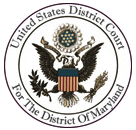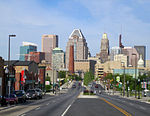CFG Bank Arena (originally the Baltimore Civic Center and formerly Royal Farms Arena, Baltimore Arena and 1st Mariner Arena) is a multipurpose arena in Baltimore, Maryland. This venue is located about one block away from the Baltimore Convention Center on the corner of Baltimore Street and Hopkins Place and also only a short distance from the Inner Harbor.
With a seating capacity of 14,000 for concerts, CFG Bank Arena is owned by the City of Baltimore and managed by the Oak View Group, a global sports and entertainment company.It officially opened on October 23, 1962. Designed by AG Odell Jr. and Associates, it was built on the site of Old Congress Hall, where the Continental Congress met in 1776.
As a cornerstone for the Inner Harbor redevelopment during the 1980s, it was reopened after renovations and was then renamed the Baltimore Arena in 1986. In 2003, it was renamed for 1st Mariner Bank, which purchased naming rights to the arena for 10 years. It was reported that 1st Mariner Bank paid the city $75,000 a year to keep the naming rights to the complex. When this naming rights agreement ended in 2013, the arena was briefly returned to its "Baltimore Arena" name, until convenience store chain Royal Farms purchased the naming rights in September 2014. This deal called for Royal Farms to pay $250,000 annually for five years to the city, and gives Royal Farms first rights to renew or restructure their deal at the end of the contract, or in the event that the city constructs a new arena.A cornerstone to the Arena was laid in 1961 with a vault that included messages from then-U.S. President John F. Kennedy, then-Maryland governor J. Millard Tawes, and then-Baltimore Mayor J. Harold Grady. The vault was opened in 2006.
The current site that was chosen for the Baltimore Civic Center was actually not one of the many sites proposed to the Greater Baltimore Committee in 1955. Among nine suggested locations were two in Druid Hill Park, three at the end of the Inner Harbor basin (where the World Trade Center and Harborplace are now located), and one in Clifton Park.








